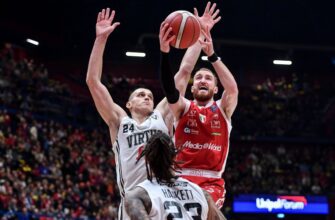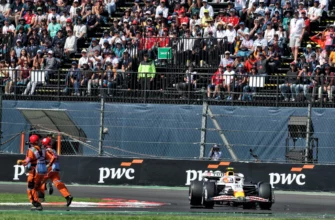The puck has dropped, the season is officially underway, and the familiar cacophony of early-season fantasy hockey panic is already reaching its crescendo. Weeks into the grueling campaign, managers worldwide are staring at their rosters, some with glee, others with a growing sense of dread. A star forward has two points in five games, while an unheralded rookie is inexplicably leading the league in goals. Such is the chaotic beauty of the initial stretch, a period ripe with overreactions and, for the discerning manager, unparalleled trading opportunities.
This early volatility is not merely random; it is a predictable pattern, a recurring motif in the grand opera of fantasy sports. The goal is not to succumb to the immediate narrative but to look beyond the surface, to differentiate between a temporary slump and a genuine decline, between an unsustainable hot streak and a breakout performance. This requires a measured approach, a keen eye for underlying data, and a willingness to act decisively while others are still wringing their hands.
The Illusion of the Immediate: Why Early Stats Can Deceive
It`s an annual tradition: a highly drafted player starts slow, perhaps struggling with a new system, recovering from a minor training camp tweak, or simply experiencing the vagaries of puck luck. Immediately, the trade block lights up with offers. Conversely, an average performer might benefit from an unsustainable shooting percentage or temporary linemates, leading to an inflated perception of their value.
The astute fantasy general manager understands that hockey is a game of samples. A handful of games, even a dozen, provides a relatively small data set. What appears to be a precipitous fall or an ascendant surge often normalizes over the course of an 82-game season. The art lies in identifying which early trends are genuine harbingers of change and which are merely statistical anomalies that will revert to the mean.
The “Buy-Low” Imperative: Unearthing Undervalued Assets
The most profitable trades often involve acquiring players whose current output does not reflect their long-term potential. These are the players currently being dismissed by impatient rivals, the ones who evoke a collective groan every time they register a goose egg. Here’s what to look for when targeting these diamonds in the rough:
- Proven Track Record: Has the player consistently delivered elite or near-elite production in previous seasons? One or two rough weeks rarely erase years of high-level performance. Veterans, especially those with a history of slow starts, are prime candidates.
- Role and Usage: Is the player still receiving top-line minutes, significant power-play time, and playing with skilled linemates? If their deployment remains elite, the points will almost certainly follow. Coaches are typically slow to demote their cornerstone players.
- Underlying Metrics: Dive beyond goals and assists. Is the player still generating shots on goal? Creating scoring chances? Their luck might be bad, but if the process is sound, positive regression is inevitable. A high shot volume player with a low shooting percentage is a classic buy-low target.
- Minor Injuries or External Distractions: Sometimes, a player is genuinely hampered by a nagging injury or preoccupied by off-ice issues (contract talks, family matters). While these can impact performance, they are often temporary. Once resolved, the player can return to form, and you’ll have acquired them at a discount.
- Team Underperformance: A solid player on a struggling team can see their personal stats depressed. If you believe the team will eventually right the ship, or if their individual contribution metrics are still strong despite team losses, they could be a hidden gem. Goalies, in particular, are often victims of porous team defense or special teams struggles.
Consider the veteran forward notorious for his record-breaking campaigns, currently sidelined with a minor ailment, or the supremely talented center who has simply forgotten where the net is for a few games. Their historical data screams “buy.” The gamble, while always present, is significantly mitigated by a strong fundamental analysis. Your rivals` premature panic is your market inefficiency.
The “Sell-High” Opportunity: Offloading Overvalued Talent
On the flip side, some players explode out of the gate, defying all expectations. While it’s tempting to ride the wave, a calculated decision to sell high can secure assets that will pay dividends throughout the season. Identifying these overvalued individuals requires a critical eye:
- Unsustainable Shooting Percentage: Is a player scoring on an incredibly high percentage of their shots, far exceeding their career average? This is a flashing red light. Unless they`ve drastically altered their shot selection or increased shot quality (which is rare to this degree), a regression to the mean is coming.
- Inflated Role Due to Injuries: A depth player might suddenly find themselves on the top power play or first line due to significant injuries to key teammates. While they may produce for a time, their role will diminish once the injured stars return, making their current value temporary. Exploit this window.
- Declining Underlying Metrics: A player might be scoring, but are they getting fewer shots, less ice time, or playing on a less effective line? If the foundation of their production is eroding, the points will eventually dry up.
- Team Outlook Deterioration: If a team is beset by long-term injuries to multiple core players, even a decent performer might see their production drop due to a weakened supporting cast. Goalies on such teams are particularly vulnerable.
- “Playoff Prowess” Premium: Some players develop a reputation for strong playoff performances, which can unfairly inflate their value in regular-season fantasy leagues. While clutch in real hockey, playoff stats don`t translate directly to your regular-season points total. If a player’s regular-season output is merely average but their name value is high due to postseason heroics, it`s time to cash in.
That third-line winger, suddenly logging first-unit power play time because three stars are out with injury? He’s a rental on your roster, and probably a very attractive one to a less observant manager. The rookie defender who put up surprising numbers last year but is now clearly relegated to a secondary power-play role? His past glory might still fetch a premium. Don`t be sentimental; be strategic.
The Art of Negotiation: Beyond the Numbers
Finally, remember that trading is also about negotiation. Present your offers with confidence, backed by your analysis. Highlight the long-term potential of your “buy-low” targets to their current owners, perhaps emphasizing their “unlucky” start. When selling high, underscore their recent fantastic output, subtly downplaying the underlying metrics that scream regression. A well-crafted trade proposal, supported by a convincing narrative, can often sway a hesitant manager.
The early weeks of the NHL season are a crucible for fantasy managers. While many will be swayed by the immediate, succumbing to the emotional swings of goals and assists, the truly successful ones will view this period as a strategic goldmine. By applying a calm, analytical approach to player evaluation and leveraging the predictable irrationality of the market, you can transform early-season chaos into a significant competitive advantage. Patience, data, and a bit of calculated ruthlessness are your most potent weapons in the quest for fantasy hockey glory.







